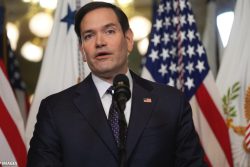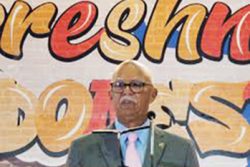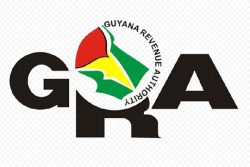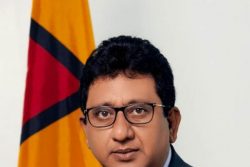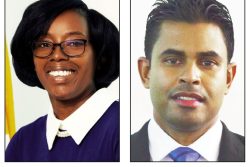Public Infrastructure Minister David Patterson on Wednesday defended the government’s decision to use the D’Urban Park for the impending independence celebrations, saying it would have almost twice the capacity of the National Stadium and would be more easily accessible to more citizens.
In a statement released on Wednesday, Patterson also confirmed that the $150M allocated for the ministry to complete Phase 1 of the project, which will see the venue readied for the May 26 golden jubilee celebrations, has been provided from the Contingencies Fund.
In addressing sources of funding prior to the ministry assuming responsibility for the project, which had been mired in controversy, Patterson revealed that donations were made to a registered company under a separate head outside of the ministry.
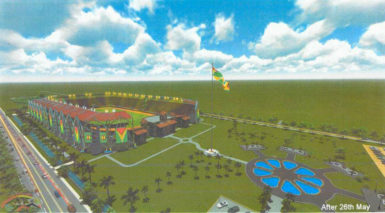
The company was not named and neither were the donors and efforts by Stabroek News to ascertain further details from the Ministry of the Presidency, under which the National Commemoration Commission had been previously running the project, were unsuccessful.
The project had generated criticism due to the lack of transparency in its management and particularly after evidence of substandard works on the stands surfaced in the public, which eventually prompted the president to assign it to the ministry.
Patterson’s statement, which followed an unsuccessful attempt by PPP/C MP Juan Edghill to seek answers on the project in the National Assembly on Wednesday, acknowledged that there had been “hiccups.” “When the Ministry assumed responsibility, there were some noted defects on the structures, such as the shrinking of the timber, loose joints and poor finishes.
These defects are presently being corrected by the contractors, based on the reviews done by MPI’s engineers,” he said, while adding that after a review the ministry decided to increase the safety factor to three in relation to the capacity of seating per stand.
He explained that the work will be conducted in a phased manner and the current works being done by the ministry is Phase 1. While the cost of the other phases have not yet be ascertained, he said the sum of $150M, which was announced before, has been allocated.
However, he noted that ministry’s responsibility over the park will not reduce or detract its funds for approved scheduled projects.
He said the ministry will update on final costs upon completion of the project but noted that funding prior to the ministry’s assumption of responsibility would be audited differently.
Valid questions
Patterson also acknowledged questions in the public surrounding the necessity of D’Urban Park in light of existing facilities, such as the National Stadium, which had been the venue for the presidential inauguration last year. He said while the questions were valid, the government had looked at the short, medium and long term benefits to be derived from investing in the park and determined that cost was justifiable.
He further noted that while the National Stadium successfully hosted the inauguration, its use also highlighted shortcomings. He said the stadium was filled to its capacity of 16,000 persons and there is a greater demand for space since the jubilee celebrations are expected to be witnessed by more than double the number of persons who attended the inauguration. In addition, he said the event had also caused major traffic disturbances and safety concerns, as noted by the police and fire departments, which cautioned against a similar activity at the venue.
According to Patterson, when completed D’Urban Park is expected to hold some 30,000 persons, giving it greater capacity than the other sites, including the National Park, the National Stadium and any other public place.
The statement went on to explain that while the National Stadium has a large pitch and outfield space, they cannot be used due to the regulations of the International Cricket Council (ICC).
He also cited the central location of D’Urban Park and the availability of parking space around the area as being other major factors in it being used for the jubilee celebrations.
“Its central location makes it more easily accessible to a greater number of citizens who do not possess vehicles.
There are also enough facilities to accommodate parking via Homestretch Avenue; Hadfield Street; two parking lots at D’Urban Park; the National Cultural Centre Tarmac; the National Sports Hall; and the National Communications Network Tarmac,” the statement said, adding that the aesthetic and sanitary transformation of the area, compared to what existed over the past two decades, makes for a healthier and more wholesome community.
Patterson also explained that the park will also be used to accommodate various public events after the 50th anniversary celebrations, while the structures that have been erected, such as the bleachers and stands, would be relocated to various community centres around the country for other activities.
“The exact locations where stands will be relocated will be determined by the appropriate ministries. The permanent structures can be used for several activities beyond the jubilee celebrations,” the statement added.
The statement highlighted that the decision to make the D’Urban Park project a reality was not one made in a “vacuum” as consultations were held with residents of the community at the Salem Church on Hadfield Street. “Furthermore, the subject of the upgrade of D’Urban Park has been a matter of general public discussions over the years and preceded this administration,” it said, while adding that every government going back to the late 1970s has made varying proposals to the upgrade of this area. Most of the different concept designs were made available to the administration and it is from these designs that the artistic impression of the completed D’Urban Park, which has been on public display via signboards around the park for several months, was conceptualised, it added.
Contractors
There have also been questions surrounding the retention of the contractors for the project and Patterson noted that nine firms are on board.
Patterson said four of the contracting firms were selected from a Public Infrastructure Ministry shortlist that was invited to bid for the construction of timber framed bleachers with steel framed roofing for the project.
“Selection criteria were based on a number of areas, including attestation of site visit; access to line of credit, no less than GY$4M; and commitment to provide requisite staff for 2 shifts per working day,” the statement explained.
Of the contractors invited by the ministry to bid, Bassoo and Sons; House Designs and Engineers Associates; S. Jagmohan Hardware Supplies and Construction Services; and C and L Construction Inc. were selected.
The other five contracting firms—TBL Engineering; Chung Global; MC Branz (Car Care); Barnes; and McCoy were involved in the project before the ministry took over, Patterson added.

